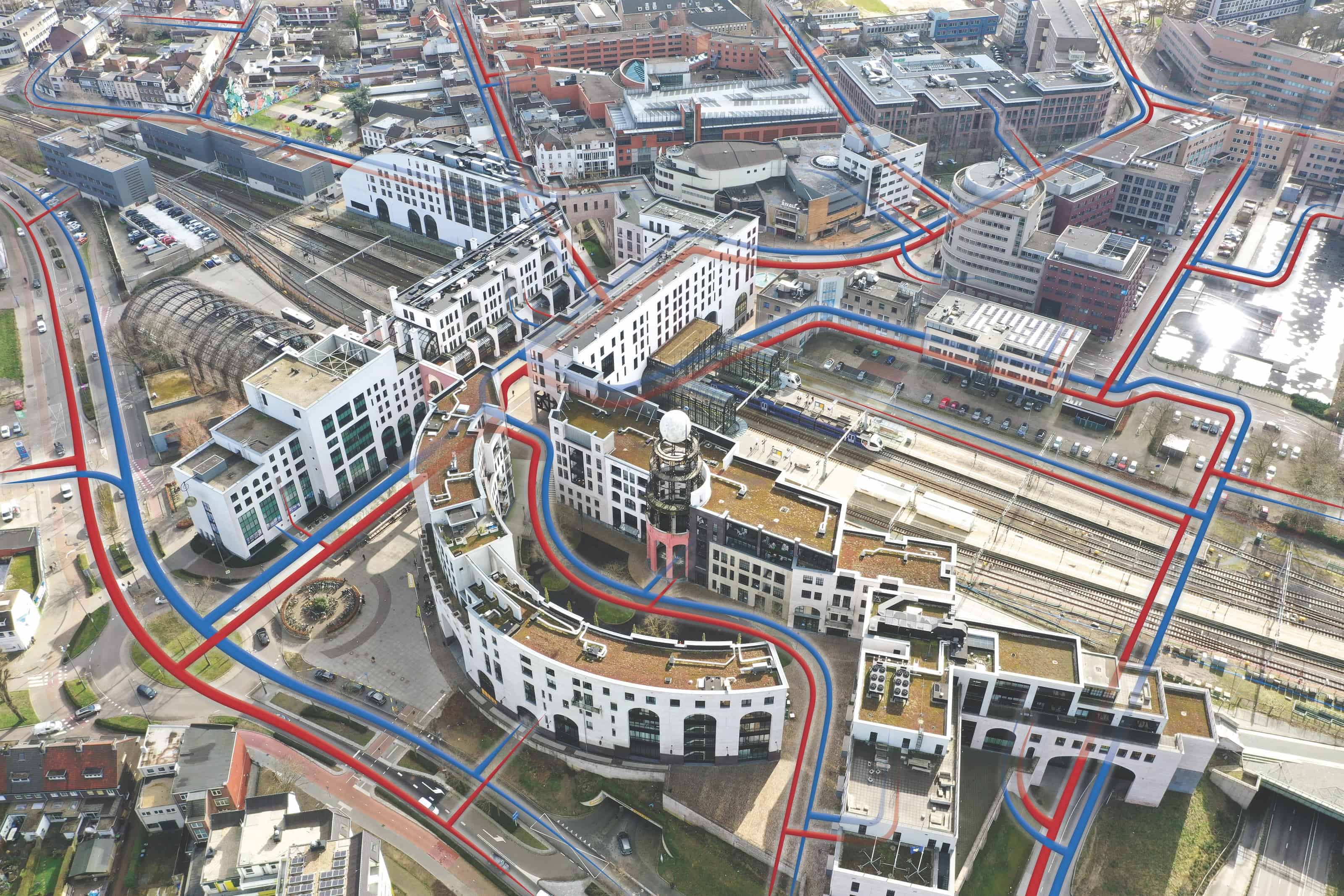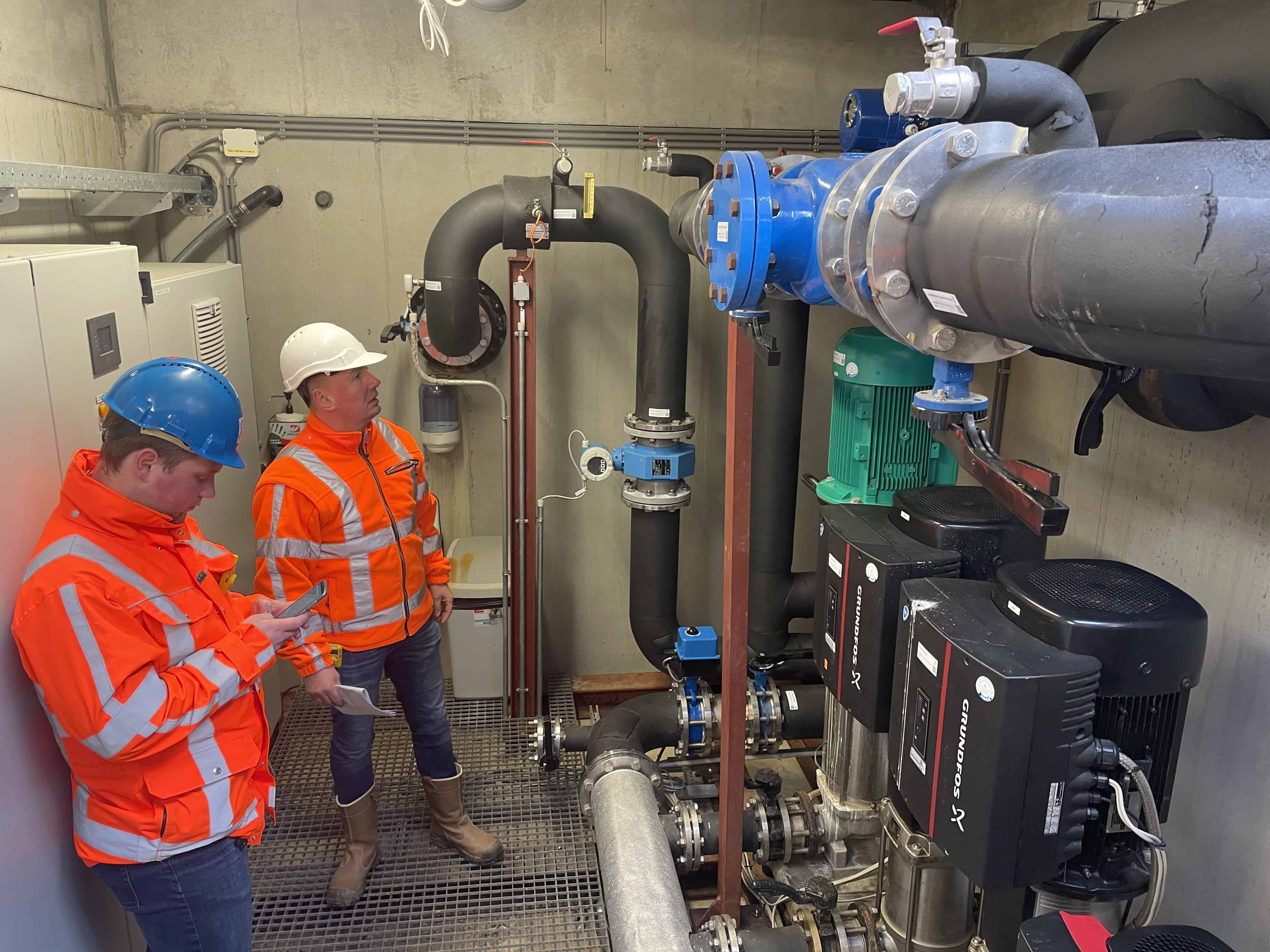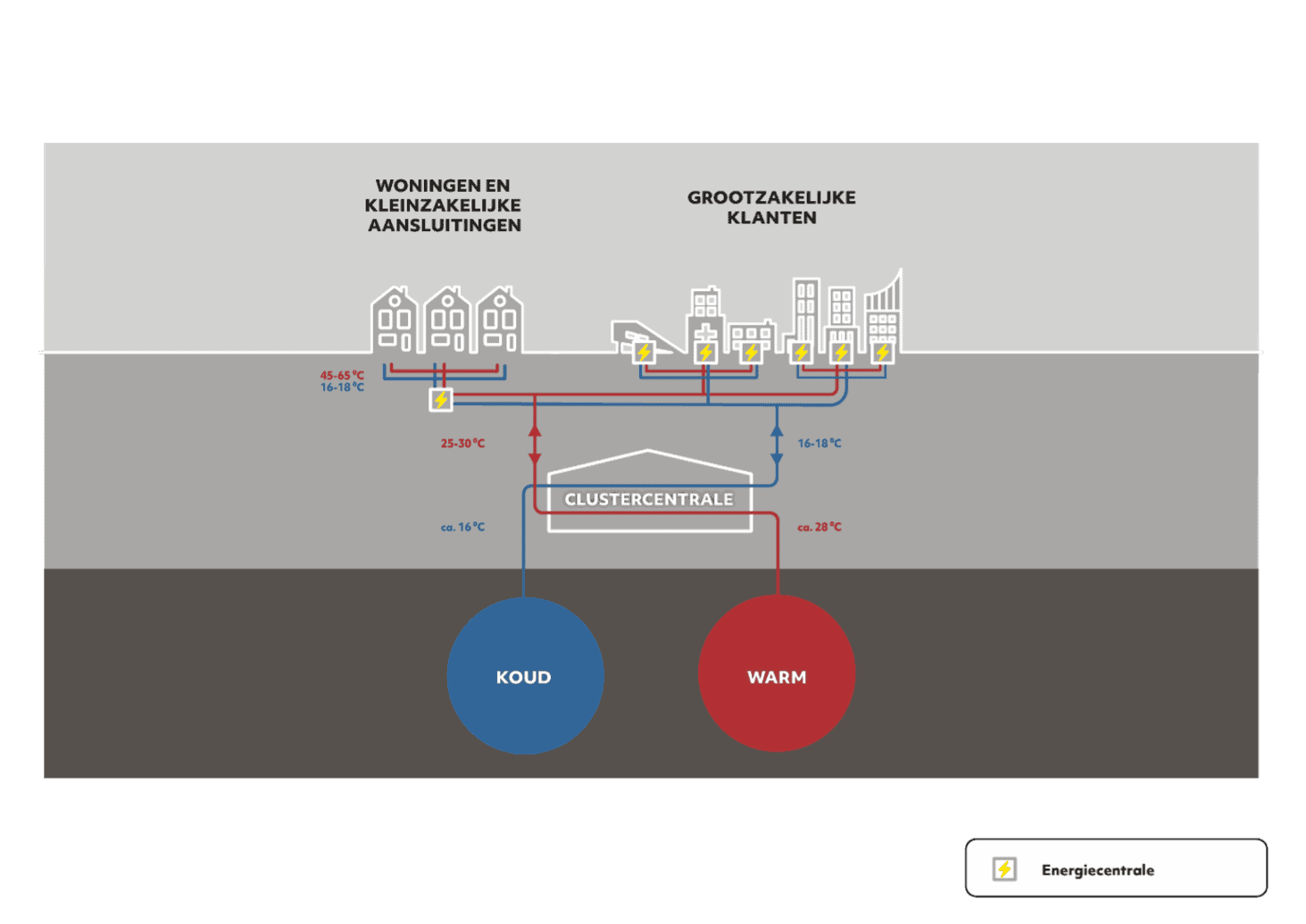
Using an old-fashioned infrastructure for a modern, sustainable application. That, in a nutshell, is the idea behind the Mijnwater project in the Dutch province of Limburg. Water in the old mines is used for cooling and heating homes and businesses above ground. A recent €120 million funding means a substantial scale-up. ‘Mijnwater’, in Dutch, means ‘my water’ as well as ‘water from the mine’.
Mining in Heerlen has left a vast corridor system under the city and its surroundings. Water was pumped out long after the mines closed in 1965 until 1994. Since then, the mine water has risen three meters per year. The earth naturally warms this water. Whereby the deeper, the hotter the water is. The deepest mine, State Mine Hendrik, is about 1,100 meters deep, where the temperature is 30 to 40°C. The water from the deeper mine tunnels is ideally suited for heating buildings, while the water in the upper systems is suitable for cooling. Heat injection should be considered at 25-30°C; for cold, it is 12-18°C.
History of Minewater
The Heerlen mine water project started in 2002 with the construction of a pilot plant. Five boreholes and a pipeline system were constructed to bring water in and out.
After four years of research, on October 1, 2008, the world’s first Minewater power plant was put into operation in the newly built Gen Coel complex in the Heerlerheide district.
Gradually, the project has been rolled out into a fairly extensive innovative circular network. The low-temperature source not only supplies heat and cooling to homes, offices, stores, and industrial companies but also utilizes residual heat from the surrounding area. Care is taken to ensure that when there is less demand, the residual energy is stored in existing underground corridors or power plants with buffer vessels. Through innovation, the network can now also be separated from the underground mining galleries by placing prefab (eco)vessels in the ground where there are no mines.
Investment in MineWater
The new step is a substantial financial boost from shareholders Enexis (€80 million) and the province of Limburg (€40 million). Grid operator Enexis is owned by six provinces and 130 municipalities. The money is mainly spent on pipelines and connections. This will allow the “most sustainable heat network in the Netherlands” to expand substantially in the Parkstad region. It will become more independent of gas and thus contributes to the energy transition.
Mijnwater’s coverage in Heerlen will go from 512 to 1,000 homes in 2026. The new area will be Kerkrade. Kerkrade-West will go from zero to between 1,000 and 1,700 homes in 2028, and Kerkrade-Centrum from zero to between 1,000 and 1,400 homes in 2030.
Most of the growth is aimed to come from the expansion of large consumers (offices, businesses, larger stores, etc.). From 179 in 2026, 232 in 2028, to 285 in 2030. This results in the biggest gain in the reduction of CO2.
The current distribution in consumption gigajoules is 50% for small and 50% for large consumption. The impact will be increased by focusing on large consumers, resulting in a ratio of 20-80.

Fifth generation heat grid
Mijnwater is the only fifth-generation heat grid in the Netherlands because heat and cold come from one system, with demand for both being cleverly exchanged locally.
Traditionally, a heat network has one or more heat sources, an underground transport and distribution network, and a delivery facility of heat to the consumer. A characteristic of traditional heat networks is the one-way heat flow: from source to consumer. Depending on the source temperature, upgrading can occur in the consumer’s building or more centrally for multiple consumers.
The Minewater system differs greatly from this in supplying cold and heat. In addition, it is an exchange network, with consumers also acting as sources. For example, consider a data center that is cooled by the Minewater system, thereby producing heat that, in turn, can serve as a source for heating homes.
Buffer Minewater
By exchanging heat, the amount of energy to be produced is more limited than the energy requirements of traditional heat networks. The balance between supply and demand for heat and cold is not always equal. For example, the demand for cold in summer will be greater than in winter. And heat demand in winter will be bigger than in summer.
To provide consumers with the right source temperature at all times, the Minewater system has buffers, including the deep former mines. At different depths, there are large reserves of groundwater of different temperatures. Surplus heat no longer needs to be discharged to the environment as with traditional heat networks but is used elsewhere at the same time or later. In this way, Mijnwater helps prevent heat stress in the summer and ensures that considerably less energy is consumed in the winter.
Three levels of network
The network has three levels: the source level, the cluster level, and the building level.
Hot and cold groundwater is pumped from the mine galleries, the underground geothermal wells. The plant pumps heat or cold into the backbone and from there through heat exchangers to the transmission networks.
These transport networks have a hot and a cold line, whereby the connected buildings can extract heat or cold from the transport network on demand. This way, heat and cold can always be supplied to the building. If heat or cold cannot be used in the local transport network, Mijnwater transfers it to the backbone via cluster installations. And then stores the heat or cold in the mine galleries.

Little inconvenience
Spokesman Marc Stoffelen explains how areas and buildings are selected for connection: “To be able to make a strategic assessment between available source capacity and potential demand, the possible outlets defined are Heerlen, Kerkrade Centrum, Kerkrade West, Hoensbroek and Brunssum. For each outlet area, criteria were determined, such as concession availability, source location, source potential, proximity to the current Mijnwater system, degree of density of customer potential, and energy labels of the buildings. These criteria were then also assessed for feasibility, suitability, and acceptance.”
But there are more benefits of the intended transition in Limburg, he says. “Everyone wants to become more sustainable, but no one wants to be inconvenienced. Mijnwater ensures that social acceptance of renewable energy is higher by eliminating disadvantages such as noise pollution, horizon pollution, or heat leaks. The underground installations of Mijnwater make the application an elegant solution for local residents and end users.”
Criticism
But not everyone is applauding the energy transition in Limburg. There are doubts about the financial implications. Leaked documents point to a hefty deficit. Stoffelen says the reports in the media that mention a loss of half a million euros per month are incorrect; it’s more like €200,000 per month, he says. The King’s commissioner for Limburg, Emile Roemer, has submitted a report, because the leaked documents involve confidential information.
Opponents consider the investments an irresponsible step given the losses and risks. Proponents point out that sustainability costs money, and the risks are acceptable. They also believe the advantage is that the government is at the wheel and not dependent on third parties in the energy transition.

